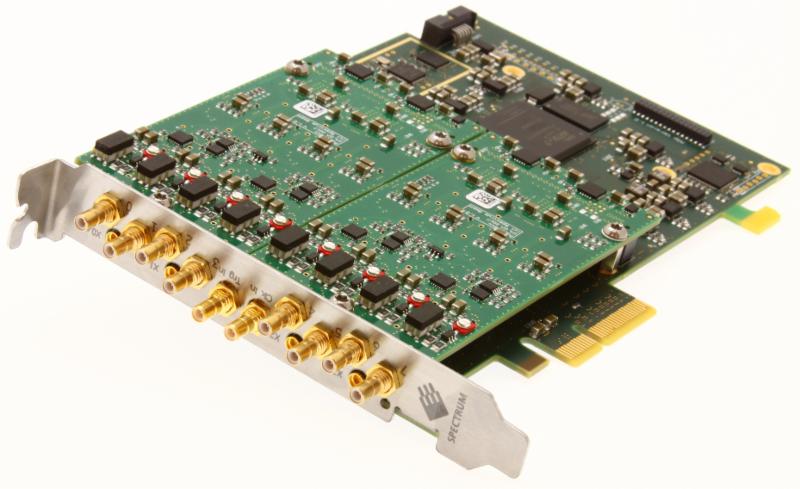- The German Spectrum Instrumentation completes its M2p.59xx range of PCI Express format digitizers with the launch of five new models.
- These 16-bit resolution digitizers increase the sampling rate from 80 MS/s to 125 MS/s.
- The new M2p-596x series includes models with 1, 2, 4 or 8 inputs each with their own 16-bit analog-to-digital converter (ADC) and signal conditioning circuit to ensure synchronous acquisition on all inputs.
These digitizers are integrated on a half-length PCIe card (167 mm long) offering, depending on the model, up to 8 unipolar channels and up to 4 differential channels. Each channel has its own programmable input amplifier from ±200 mV to ±10 V, a programmable input offset for unipolar measurements, a programmable input impedance of 50 Ohms and 1 MOhms and an integrated calibration circuit.
These data acquisition boards offer various trigger modes, an on-board memory of 1 GByte and several signal acquisition modes.
The digitizers are equipped with a PCIe x4 interface that allows throughputs of more than 600 MB/s or more than 80 MS/s continuously for 4 channels.
The boards also support Spectrum’s new SCAPP software option (Spectrum CUDA Access for Parallel Processing) to scan, process and analyze signals. SCAPP allows the use of a CUDA-based graphics processing unit (GPU) directly between a Spectrum digitizer and a PC. Data is thus transmitted directly from the digitizer to the GPU on which parallel processing can be performed using its multi-core processors (up to 5000). This data streaming capability combined with SCAPP software aims to improve measurement speed while freeing PC resources.
Up to 16 digitizers can be synchronized using Spectrum’s Star-Hub technology. Star-Hub enables systems with up to 128 channels to be implemented, sharing a common clock and trigger in a single chassis. Synchronisation with other external equipment is also possible. Four individually programmable connectors on the front panel provide additional trigger inputs, status outputs, synchronous digital input lines, asynchronous I/Os or a reference clock input for an integrated time stamping unit.






